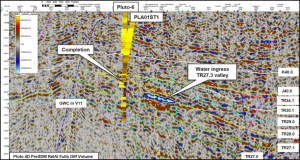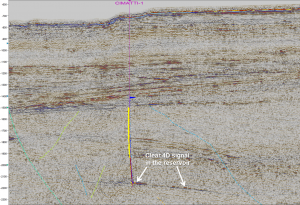
- This event has passed.
SPE APOGCE conference preview – A Campaign Of 4D Seismic Monitor Surveys on Australia’s Northwest Shelf
November 17, 2020 @ 8:00 am - November 19, 2020 @ 5:00 pm

| Paper Number | : | SPE-202402-MS |
| Paper Title | : | A Campaign Of 4D Seismic Monitor Surveys on Australia’s Northwest Shelf |
| Author Block | : | P. Thomas, G. Harrowfield, J. Fitzpatrick and B. Berglin, Woodside Energy Ltd. |
APOGCE Conference 2020 registration:
https://www.spe-events.org/apogce2020/home
Abstract
We showcase an innovative campaigning and business-focused approach to reservoir monitoring of multiple fields using 4D (time-lapse) seismic. Benefits obtained in terms of cost, speed and the quality of insights gained are discussed, in comparison with a piecemeal approach. Challenges and lessons learned are described, with a view to this approach becoming more widely adopted and allowing 4D monitoring to be extended to smaller or more marginal fields.
An offshore seismic acquisition campaign was planned and successfully executed for a sequence of four 4D monitor surveys for fields located within 250 km of each other on the greater Northwest Shelf of Australia. The four monitors were acquired in H1 2020 comprising (in this order): Pluto Gas Field M2 (second monitor), Brunello Gas Field M1 (first monitor), Laverda Oil Field M1 and Cimatti Oil Field M1. Encouragement for this programme was derived in part from prior success with Pluto Field M1 (Figure 1).
Cost savings expected from campaigning were realised, despite three cyclones during operations, with success largely attributed to detailed pre-survey planning. Also important were the choice of vessel and planning for operational flexibility. The baseline surveys were diverse and required careful planning to achieve repeatability between vintages over each field, and to optimise the acquisition sequence – minimising time required to reconfigure the streamer spreads between surveys. The Cimatti baseline survey was acquired using a dual-vessel operation; modelling, combined with now-standard steerable streamers, showed a single-vessel monitor survey was feasible. These optimisations provided cost savings incremental to the principal economy of sharing vessel mobilisation costs across the whole campaign.
Both processing and evaluation (ongoing at the time of writing) are essentially separate per field, but follow a consistent approach. Processing is carried out by more than one contractor to debottleneck this phase, with products, including intermediate quality control (QC) volumes, delivered as pre-stack depth migrations. An example is shown in Figure 2, with clear 4D signal identified early in the processing sequence. While full evaluation of the monitor surveys to static and dynamic reservoir model updates will continue beyond 2020, key initial reservoir insights should emerge within days of processing completion, with some even earlier from QC volumes. Furthermore, concurrent 4D evaluations are expected to result in fruitful exchanges of ideas and technologies between fields.
Figure 1: Example from previous 4D monitor evaluation in Pluto Field (M1): relative acoustic impedance difference section, showing clear hardening (blue) from water ingress into gas reservoir TR27.3.
Figure 2: Section through preliminary 4D processing output from Cimatti M1/baseline surveys, showing clear 4D signal at the reservoir level. This is a difference volume M1-minus-baseline in 2-way time, full offset range. 4D signals are expected to become substantially cleaner with ongoing processing.

